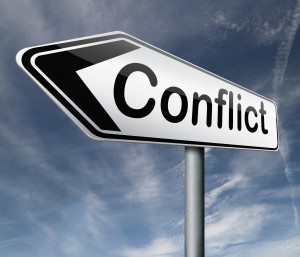 Baker & McKenzie is one. Dentons is as well. So are DLA Piper, Hogan Lovells, King & Wood Mallesons, Norton Rose Fulbright, and Squire Patton Boggs. What these venerable law firms all have in common is they are organized as Swiss associations, or “vereins.”
Baker & McKenzie is one. Dentons is as well. So are DLA Piper, Hogan Lovells, King & Wood Mallesons, Norton Rose Fulbright, and Squire Patton Boggs. What these venerable law firms all have in common is they are organized as Swiss associations, or “vereins.”
A Swiss verein is a formal legal structure recognized under Swiss law, akin to a voluntary association under U.S. law. For law firms offering legal services in multiple countries, organizing as a Swiss verein offers certain advantages, but also a number of ethical disadvantages.
Advantages of Verein
From a branding viewpoint, to the outside world, the verein firm appears as one unified body consisting of thousands of lawyers in dozens of offices. The availability of counsel all operating under the same “roof” can be particularly attractive when pitching equally enormous, multinational clients. The old sales pitch lauding the benefits of “one-stop” shopping has most likely been uttered in more than a few verein dog and pony shows.
Another perceived advantage for a law firm operating under this structure is that, at least in theory, each office has limited liability as to the acts of other offices. Thus, partners in the New York office of Baker & McKenzie may not be strictly liable in tort or contract for the actions of their partners in the firm’s Shanghai office.
Another advantage of the verein law firm is simplification in organization. Each office is bound by the local regulator. The verein law firm financials are simplified since tax, accounting, and partner compensation remain separate between the constituent organizations. By the same token, profits cannot be shared between one verein member and another member.
But not all of the verein structure is rosy.
Ethical Issues With Verein Structure
A verein law firm’s attempt to limit liability to a client is an area raising ethical exposure. It is well settled a law firm may not, as part of its engagement agreement, prospectively limit the lawyer’s liability to a client for malpractice unless the client is independently represented by counsel in making such agreement. See ABA Model Rule 1.8(h)(1). Assuming the independent representation exception is not applicable, if a verein firm attempts to limit claims for malpractice in the engagement agreement to one operating unit under the “we are all different entities” theory, such agreements could potentially be challenged as one type of advanced limitation on a client’s right to sue for malpractice claims.
Yet another ethical risk of the verein is the more lawyers associated under one brand, the greater the chance for conflicts of interest–at least under U.S. law. Indeed, under U.S. law, the formal structure of a verein means nothing to state and federal bar counsel; they treat each office as part of the same association and thus all part of the same firm, regardless of corporate formalities. Indeed, the ABA Model Rules specifically define a “firm” or “law firm” as “a lawyer or lawyers in a law partnership, professional corporation, sole proprietorship or other association authorized to practice law. . . .” ABA Model Rule 1.0(c) (emphasis added).
 One example of a verein firm conflict of interest involves Dentons, which represented Revolaze LLC, in an International Trade Commission investigation for patent infringement involving jeans. The investigation asserted a number of importers of jeans, including the retailer Gap, were importing jeans protected by Revolze’s patent rights.
One example of a verein firm conflict of interest involves Dentons, which represented Revolaze LLC, in an International Trade Commission investigation for patent infringement involving jeans. The investigation asserted a number of importers of jeans, including the retailer Gap, were importing jeans protected by Revolze’s patent rights.
Gap filed a motion to disqualify Dentons because Gap was a current client of Denton. Thus, its representation of one client adverse to another client created a conflict of interest under ABA Model Rule 1.7(a), which proscribes a firm representing a client from taking an adverse position against that same client in the same or a different matter.
Dentons refused to withdraw and argued it was not unethical to represent Gap in some matters while suing it in others because its offices were separate, and Denton’s Canadian office was representing Gap while a Denton’s U.S. office was adverse to Gap. Dentons further argued the offices were financially separate, they did not have access to each other’s client files, and they never shared client confidences.
The ALJ rejected the different-office argument, noting that Dentons “holds itself out to the public as a single firm.” The ALJ further noted the definition of a “law firm” under ABA Model Rule 1.0 includes “other associations authorized to practice law.” Accordingly, the ALJ disqualified Dentons based upon its conflict of interesting in taking a position before the ITC adverse to its current client.
I was interviewed recently by The American Lawyer to discuss the ethical implications of the verein structure. As an aside, I was pleased the article said my “specialty” is “in legal ethics in the intellectual property bar.” In any case, as stated in The American Lawyer article, “You have to deal with the fact that this verein structure, while it might be good as a business structure, it’s not going to insulate you from the [firm’s] ethical obligations.”
The takeaway from the Dentons’ disqualification is verein structure or not, from an ethics standpoint, it is still “all for one and one for all.” Organizing a law firm as a verein may, for tax or business purposes, be brilliant. It will not, however, insulate the firm from conflicts of interest nor the rule prohibiting advanced waivers for malpractice. Simply put, regulators in the United States may not permit a law firm to rely upon its structure and say one thing (i.e., each office is “separate” for conflicts and other purposes) when it is convenient to do so, while at the same time obtain the benefits associated with representing to the public “we are all one” and hold itself out under one brand with thousands of lawyers around the world.
Verein firms should take extra care in running conflicts checks so they account for the risk of former or current clients, taking into consideration the clients in all of the firm’s offices. If they fail to do so, the verein risks the possibility of disqualification, and the attorneys in the verein firm risk possible disciplinary action by bar counsel.
Pingback: Law firms – why are they always targeted for cybercrime? | Blue Dragon Asia